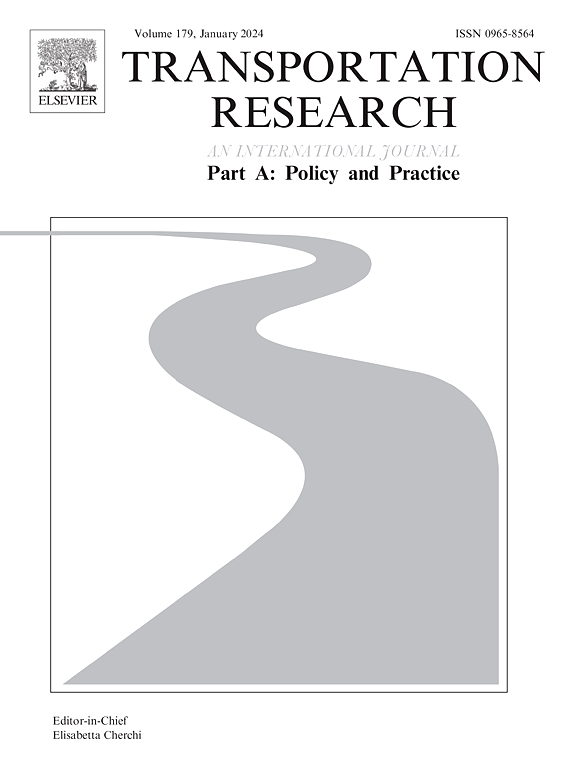The gender travel gap: Exploring intersectional socio-demographic and gender differences in travel in Tel-Aviv through semiparametric mixed model analysis
IF 6.3
1区 工程技术
Q1 ECONOMICS
Transportation Research Part A-Policy and Practice
Pub Date : 2025-04-05
DOI:10.1016/j.tra.2025.104451
引用次数: 0
Abstract
After conditioning on salient socio-economic attributes such education, employment, income, and household structure, the consensus in the literature is that inherent gender differences persist as an underlying driver of mobility. Females continue to have a lower degree of mobility compared to males when drawing on evidence from studies predominately undertaken in developed countries in the global West. The aim of this study is to contribute to the relatively scarce literature on gender differences in travel in the global East. We perform semiparametric regression analyses to quantify the impact of gender differences in travel in the metropolitan region of Tel-Aviv, Israel using data from 2014–2017. We additionally investigate the intersection of gender and ethnic/religious identification as the data identifies Jewish and Arab populations. In line with the existing literature, we find that females travel less frequently and have shorter travel times and distances compared to males after accounting for 23 different socio-demographic, travel preference, and temporal variables. Moreover, we observe additional mobility penalties for females who are married and have children and for females who identify as Arab. To increase female mobility, we recommend policies to promote higher education which boosts female mobility and policies to reduce the home-based care-taking burden on females such as investment in childcare infrastructure and services. Specifically for Arab females, we additionally recommend policies to improve access to local job opportunities and as well as improving transport accessibility and connectivity in Arab sector zones in Israel.
求助全文
约1分钟内获得全文
求助全文
来源期刊
CiteScore
13.20
自引率
7.80%
发文量
257
审稿时长
9.8 months
期刊介绍:
Transportation Research: Part A contains papers of general interest in all passenger and freight transportation modes: policy analysis, formulation and evaluation; planning; interaction with the political, socioeconomic and physical environment; design, management and evaluation of transportation systems. Topics are approached from any discipline or perspective: economics, engineering, sociology, psychology, etc. Case studies, survey and expository papers are included, as are articles which contribute to unification of the field, or to an understanding of the comparative aspects of different systems. Papers which assess the scope for technological innovation within a social or political framework are also published. The journal is international, and places equal emphasis on the problems of industrialized and non-industrialized regions.
Part A''s aims and scope are complementary to Transportation Research Part B: Methodological, Part C: Emerging Technologies and Part D: Transport and Environment. Part E: Logistics and Transportation Review. Part F: Traffic Psychology and Behaviour. The complete set forms the most cohesive and comprehensive reference of current research in transportation science.

 求助内容:
求助内容: 应助结果提醒方式:
应助结果提醒方式:


